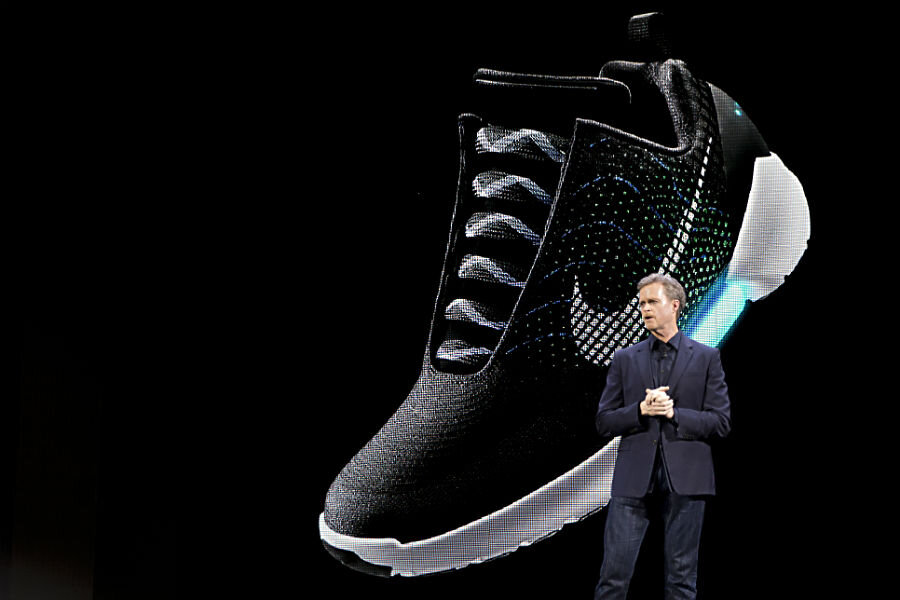Nike's self-lacing shoes: Another product born of innovation
Loading...
Nike, Inc. burnished its well-deserved reputation for innovation by unveiling its futuristic self-tying shoe, among its other new products, at a company showcase in New York on Wednesday.
No other sports apparel company has as many patents.
The new merchandise at Nike’s event underscored a focus on the “Era of Personalized Performance.” The company says its footwear, training apparel, and more draws on targeted research and athlete feedback to provide products that promote enhanced performance for their users.
“We have the most personal solutions to today’s most common challenges,” Nike CEO Mark Parker said. “We know athletes better than anyone else. Today, for the first time, all athletes can benefit from that expertise.”
This latest wave of innovation is born out of the company’s push to put out more technically advanced products every year; a 2014 Macquarie University study of Nike’s patent activity found that after receiving about 340 patents in 2012, Nike was granted more than 540 in 2013. According to the United States Patent and Trademark Office, the company was granted even more in 2014 and 2015, and had more than 160 patents successfully processed this year.
The Macquarie analysis also found an average annual increase of 14 percent in the amount of patents granted to Nike since 2000. Over the past 40 years, Nike has been granted more than 4,000 patents while its top competitors Under Armour, New Balance, Reebok, and Adidas have received about 1,000 combined.
Nike’s innovative focus can be seen in its licensing efforts, but the drive for innovation is a financial priority, too. Exact research and development budget numbers are not released by the company, but it is estimated that Nike allocates “a mid-to-high single digit percentage” of its more than $30 billion in sales to R&D, according to Macquarie analyst Laurent Vasilescu.
Many of those past patent filings were on display as finished products at Nike’s innovation event and will soon become available to consumers. The Flyknit line of shoes, Air cushioning technology, and new lines of Vapor uniforms and activewear are all designed with performance improvement in mind, according to Nike.
Alongside those products, Nike unveiled football cleats layered with a mud-resistant polymer, anti-slip socks, and the “adaptive lacing” Nike HyperAdapt 1.0, which tighten automatically when a user puts them on in order to reduce potential slipping and pressure caused by improperly tied laces. While the technology may seem like superfluous science fiction – self-tying Nike shoes were featured in the 1989 movie "Back to the Future II" – Nike believes the adaptive system will end up boosting athletes’ performance.
“Innovation at Nike is not about dreaming of tomorrow. It’s about accelerating toward it,” said Nike designer Tinker Hatfield. “We’re able to anticipate the needs of athletes because we know them better than anybody. Sometimes, we deliver a reality before others have even begun to imagine it.”
In addition to its physical products, Nike also aims to make its Nike+ app more relevant to athletes and Nike fans alike. The company will update the platform in June with enhanced connectivity with other Nike apps, feeds for news and shopping, and additions to its signature fitness tracking including individually-tailored training and product advice.
“We are surrounded by technology and data, but for athletes to truly achieve their potential they require something richer and more meaningful. They don’t need a dashboard; they need a relationship,” Mr. Parker said.








